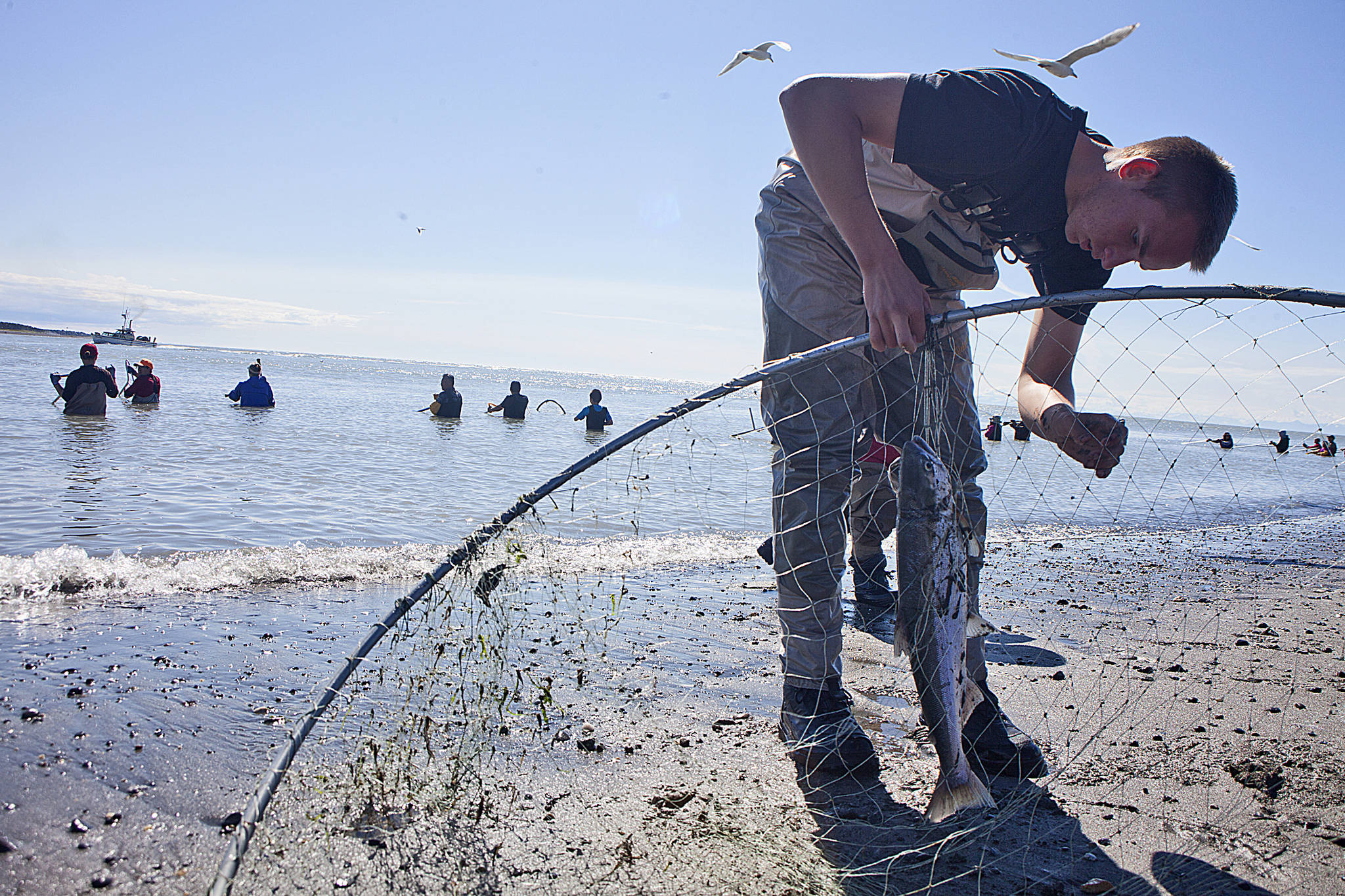Although people debate the value of the Kenai and Kasilof personal-use dipnet fisheries, they all find at least one thing that could be or is an issue with them.
The two fisheries, which take place each summer at the mouth of each river, allow Alaskans a shot at some of the hundreds of thousands of sockeye salmon that return there in June and July. The Kenai River dipnet fishery is the most popular of its kind in the state, with more than 30,000 fishing days every year since 2011, to fish from boats and from the beaches and banks downstream of the Warren Ames Bridge. The Kasilof fishery, which is slightly less popular and boasts smaller sockeye runs, registers approximately 10,000 fishing days regularly.
The problem is that there’s no clear plan to deal with the continual growth of the fishery. The city of Kenai bears the brunt of enforcement, cleanup and infrastructure costs for the Kenai dipnet, running up a bill of approximately $589,000 in 2016, according to the city’s fiscal year 2017 dipnet report. On the Kasilof, the Alaska State Wildlife Troopers provide some enforcement on the beach, but cannot constantly patrol, and the state has to front the cost for portable toilets and cleanup.
On Sunday, the Board of Fisheries voted to close long sections of the Kenai River’s banks to shore-based dipnetting, but rejected the rest of the dipnet-related proposals.
During a discussion of a proposal that would eliminate the Alaska Department of Fish and Game commissioner’s authority to extend the fishery to 24 hours per day, concern arose about the burden on the city of Kenai for maintenance. The Alaska Department of Law ruled that the board didn’t have the authority to revoke the commissioner’s authority, but board member Robert Ruffner asked Fish and Game Commissioner Sam Cotten for a promise to work with the city government more closely.
“If there’s a 24-hour fishery, it does impact the local government’s ability to do their job, as it would with an extension of the season,” he said. “I certainly pledge to work closely with the city.”
Although all the members voted against the proposal, most acknowledged that the issues with the dipnet fishery are real. Board member Orville Huntington said he hoped the board and Fish and Game would treat the city of Kenai with more respect in the future.
“I think we need to acknowledge that it’s a pretty severe cost to those residents,” Huntington said. “We should be treating them kindly (for) them sharing their resources with us.”
The proposal that passed, an amended version of a proposal from Fish and Game, closes the banks between No Name Creek and the Warren Ames Bridge on the north bank and between the beach and the Kenai Landing dock on the south side. It doesn’t include the highest-use area, which is the south bank near the Warren Ames Bridge, where there is a state-run parking lot.
Ruffner motioned for the change at the request of Kenai’s city council, saying there were a number of private landowners who had established infrastructure to access the river there. The former executive director of the Kenai Watershed Forum, a conservation organization, he said that the land on the flats is too sensitive for long-term foot traffic.
“These are tidally inundated flats,” he said. “Once or twice a year, the water runs up over them. They’re loamy soils, really subject to getting compacted when you walk on them, put coolers on them. … Once you compact these particular kinds of soils, you can’t fix them.”
The one confounding factor is that the state is working on obtaining funding for habitat protection structures there, and managers were worried that if the banks were closed, there would be no impetus for the funding. The board batted around the idea of a sunset clause or possibly allowing the department to use its emergency order authority to close the banks.
Ruffner said he was concerned that the grants may not work out and the damage will continue. The board ultimately accepted the proposal with a vote of 5-2.
The board rejected all other proposals related to the Kenai dipnet fishery, saying they wanted to maintain the status quo and work on collaboration.
Though people disagreed about the particular negative side effects of the fishery, almost everyone who participated in the committee process Friday had one or two observations about the fishery that were causing problems, including fish waste, small boats being swamped by bigger boats, household limit abuse or general disarray. However, the one thing many agreed on was that something needed to be done in the fishery. During the committee discussion, one theme arose in multiple people’s suggestions — a long-term plan.
When the dipnet fishery was established in 1993, there wasn’t really a plan for it. It replaced the historical subsistence program that allowed Alaskans to harvest fish wherever they wanted for personal purposes, but the Board of Fisheries didn’t provide funding for it and there weren’t clear parameters for regulations other than household limits, gear type and area. Each personal-use area works differently.
Board member Sue Jeffrey referenced this during the board’s discussion.
“A long-term plan may come forward with future discussions, but for now I think this is working hand-in-hand with this community that is hosting this amazing fishery,” she said.
Reach Elizabeth Earl at elizabeth.earl@peninsulaclarion.com.

